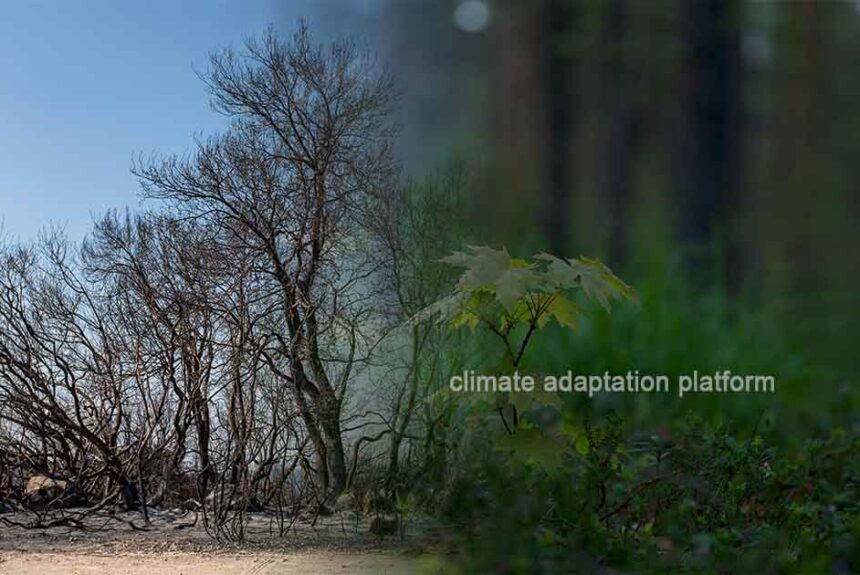Land degradation is a common problem in Ethiopia that has a disastrous impact on its economy and agricultural production, with cascading effects on economic, social, and political lives.
A 2023 review published in the Journal of Agriculture and Extension and Rural Development highlighted that land degradation in Ethiopia results from multiple factors. These include increasing population pressure, which leads to the conversion of ecologically sensitive areas and forests into farmland.
Additionally, waste generated by households and industries, unsustainable wood harvesting for fuel, and harmful agricultural practices—such as excessive chemical use and lack of soil conservation—contribute to the issue. Overgrazing by cattle, combined with extreme weather events and climate shocks such as droughts, as well as unsustainable mineral mining, further exacerbates the problem.
But Ethiopia is fighting back to restore its degraded lands, recognising the toll and damage it is causing to the economy, society, and its people. Their government launched the Green Legacy and Landscape Restoration Special Fund on 24 December 2024, allocating 0.5% to 1% of its annual federal budget, about $40 to $80 million, to restore degraded landscapes. The World Resources Institute reports this as a landmark move that can set a powerful precedent for other countries with problems similar to Ethiopia’s.
The Green Legacy and Landscape Restoration Special Fund is part of the national programme established in 2019, known as the Green Legacy Initiative (GLI). Its goal is to combat land degradation and foster a greener, more climate-resilient country. By creating this fund, Ethiopia aims to enhance its restoration efforts through government funding.
Achievements through the GLI
The Green Legacy Initiative (GLI) has successfully planted over 25 billion trees in just four years, exceeding its initial targets. The latest data indicates that it has now grown more than 32 billion seedlings, aiming to reach a total of 50 billion trees by 2050.
This large-scale tree-planting effort is part of a broader strategy for land restoration in the country. The initiative aims to improve food security, enhance air quality, increase water availability, boost climate resilience, and create job opportunities.
The tree-planting initiative has generated significant benefits for the country, creating over 767,000 jobs in nursery management, seedling production, agroforestry, and sustainable land management. Many of these jobs are for women and youth.
The African Forest Landscape Initiative, AFR100, is another government programme that promises to restore 22 million hectares (84,942 square miles) of degraded land.
The WRI article notes that these government initiatives have delivered positive results in the country in terms of reversing forest and land degradation while increasing forest cover in the same period. Between 2013 and 2023, the country’s annual deforestation rate dropped from 92,000 to 27,703 hectares, while forest cover increased from 15.5% to 23.6%.
While land degradation remains a serious challenge in Ethiopia, the country has taken ambitious and impactful steps toward reversing this trend through comprehensive land and forest restoration efforts. These initiatives show promising progress, but continued effort and commitment are essential. Institutionalising these actions, as Ethiopia has done, is crucial, as it ensures long-term sustainability with far-reaching benefits for the economy, society, and overall quality of life.
By creating jobs, improving livelihoods, and enhancing climate resilience, Ethiopia’s approach stands out as a model for other countries facing similar economic and environmental challenges, demonstrating that meaningful and lasting change is possible with a commitment and political will.
Please read the article to learn more about Ethiopia’s land and forest restoration projects and their co-benefits: Ethiopia Invests Big in Restoring Degraded Land
Sources:
Issayas, T., & Lemma, Y. (2025, May 29). Ethiopia Invests Big in Restoring Degraded Land. WRI. Retrieved from https://www.wri.org/insights/ethiopia-invests-big-restoring-degraded-land
Asnake, B. (2023, March 15). Land degradation and possible mitigation measures in Ethiopia: A review. Journal of Agricultural Extension and Rural Development. Retrieved from https://academicjournals.org/journal/JAERD/article-full-text-pdf/BC480BE71772.pdf



Leave a Reply